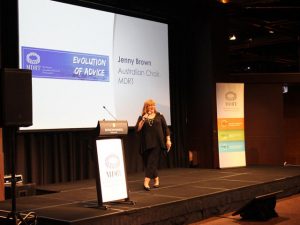Underwriting is an essential part of the life insurance application process to ensure clients receive the cover that is appropriate to them.
At the same time, it can be complex and slow as it gathers information from clients to assist in the decision making process, but could it be made easier?
BT Financial Group’s Rachel Leong outlines a simplified approach to underwriting that is currently in use and shortens the process for clients, advisers and insurers.
Leong claims that drawing on information already at hand will create a better approach to underwriting for advisers and their clients.
With underinsurance a well-known issue for many Australians, highlighting the benefits of obtaining adequate life insurance cover is an important step when talking to clients. One way to encourage clients to prioritise being properly protected with the right type of insurance is to simplify the underwriting process without compromising protection.
While it is necessary to obtain detailed information pertaining to the applicant’s medical history, it’s possible for an insurer to take a more simplified approach when it comes to obtaining financial evidence to support an insurance application. This approach also addresses appeals from advisers for a faster and more consistent underwriting process.
Progressive insurers will only require financial evidence when the client applies for high levels of cover, and if any information is required, this can be done by asking a few simple questions.
BT has adopted this simplified underwriting process because in most cases it is unnecessary to acquire financial evidence.
Financial information is already provided by the client in the application process, and receiving evidence to support this does not affect the level of cover offered. Nearly all applicants supply the correct information, and therefore this new underwriting methodology caters for the greater proportion of clients. The traditional underwriting approach caters for the very rare cases where a client may disclose incorrect financial information.
Generally, the level of lump sum cover is based on a multiple of income (plus any loan balances), where the multiple is based on the client’s age bracket. It is important to understand the different multiples applied by various insurers, as this may influence the overall level of cover offered.
With regard to income itself, an assessment can be made on what would be reasonable, based on the client’s occupation. In the case that the salary stated in the application does not match expectations, this can be quickly resolved through a conversation with the adviser.
Applications for income protection cover can also benefit from a more simplified process. For example, it is common for financial evidence to be required to underwrite agreed-value contracts. However, insurers can offer cover without financial evidence, when cover is under specific thresholds and allow many applications to be fast-tracked.
The same principle of simplification can be applied to non-occupation based cover; that is, it is unnecessary to obtain financial evidence from clients applying for home duties income protection (IP) and total and permanent disability (TPD) policies.
While an individual who is engaged in domestic duties does not earn an income, there is an assumed level of income cover to allow a professional to perform those tasks, should the home maker become disabled. Therefore, in this event there is no need for the client to provide this information. There may also be cases where the client is about to return to work. If this is the case, normal earned income can be used as the basis for determining a higher level of cover offered1.
In addition, debt protection under home duties cover may be offered. While the home maker does not contribute to debt repayments, it is likely that they will be liable for the loan. If the client needs to claim on their policy, financial evidence to support the benefit will generally not need to be supplied by the client, unless it is a claim on a policy type where this is normally required2. The usual approach at claim time is to work with customers if they are required to provide financial evidence.
Hypothetical example – lump sum cover
Ava, age 36, is currently on maternity leave. In three months, she will return to her role as a paediatrician on a part-time basis (21 hours a week), earning $100,000 per annum. Ava is applying for $3.55 million death and $2.9 million TPD cover, which allows for income replacement and $800,000 debt protection.
As Ava will be returning to work soon, the insurer can calculate income cover based on her age-based multiple of 30, multiplied by $100,000. The maximum amount of death and TPD cover that Ava could be offered, without financial underwriting, is $3 million plus $800,000; which is above what she has applied for. Therefore, Ava is offered $3.55 million death and $2.9 million TPD cover, without the need for financial evidence.
Hypothetical example – income protection cover
Lucas, age 40, is a solicitor who operates as a sole trader earning $350,000 per annum. In 2016, he earned an income of $320,000, and in 2015 he earned $270,000. Therefore, his financial adviser recommends that he apply for an agreed-value income protection policy that provides a monthly benefit of $21,250. As this level of monthly benefit was under the insurer’s underwriting threshold, this amount of cover could be offered to Lucas, without the provision of financial statements, and without the need for financial underwriting.
If the insurer had to formally financially underwrite the case, the assessment for the benefit level would be based on the 2016 financial statements (showing income of $320,000), as the 2017 statements have not yet been finalised. In this scenario, the maximum benefit that could be offered to Lucas would only be $20,000 per month.
The outcome of a faster, easier and more accessible underwriting process is a better client experience. In addition, without the need for financial evidence, completion time is faster. It is estimated that the time taken to underwrite an application can be reduced to 25 days in total3 – a reduction of 28 days. Simplifying the process and reducing the time taken to obtain life insurance is a positive step to helping clients protect themselves and their families.

Rachel Leong is a Senior Manager – Product Technical for Life Insurance at BT Financial Group
References
[1] Cover will be based on home duties definitions.
[2] Examples of policies that would have this requirement are: an indemnity income protection policy; an agreed-value income protection policy where the monthly benefit is above defined pre-disability income; or a superannuation income protection policy, where the trustee needs to determine the amount that can be released under superannuation law.
[3] Based on BT data, 22 February 2017.










